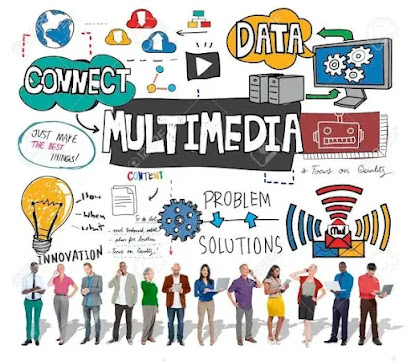MARIO ETECH 1
a. My understanding about multimedia . Please include samples images, videos, or websites you created using the link or insert button
A. I'm unable to directly provide or display images, videos, or websites. However, I can certainly help you understand multimedia and guide you through its usage. Let's dive into the concept of multimedia.
Multimedia refers to the integration of different forms of media, such as text, images, audio, video, and animations, into a single presentation or application. It enhances communication and engagement by combining various elements to convey information or tell a story. Multimedia can be found in various digital platforms, including websites, presentations, mobile applications, and more.
While I can't show you specific examples, I can provide a general idea of what you can do with multimedia. Here are a few examples:
Website: You can create a website that incorporates images, videos, and interactive elements to provide an immersive user experience. For instance, you can include image carousels, embedded videos, audio clips, and animations to engage visitors.
Video presentation: You can create a video presentation by combining slides, images, text, and audio narration. This can be done using video editing software, where you can add visual effects, transitions, and background music to enhance the message you want to convey.
Interactive multimedia application: You can develop an interactive application that includes elements such as images, videos, quizzes, and games. This type of multimedia allows users to actively engage with the content and provides an interactive learning or entertainment experience. B. To use multimedia, follow these general procedures:
Determine the purpose: Identify the objective of using multimedia. Do you want to inform, entertain, educate, or persuade your audience? Clarifying your goals will help you select the appropriate media elements.
Plan your content: Create an outline or storyboard to organize your ideas and structure the flow of your multimedia presentation. Consider the sequence of text, images, audio, and video elements to ensure a cohesive narrative.
Gather and create media: Collect or create the media elements you need. This may involve capturing or editing images, recording audio, shooting videos, or designing graphics. Ensure that the media aligns with your content and enhances your message.
Select multimedia tools: Choose the appropriate software or tools to assemble and edit your multimedia content. This could be video editing software, graphic design tools, or web development platforms, depending on the medium you're working with.
Combine and edit: Import your media elements into the chosen software and arrange them according to your storyboard. Edit and enhance the media as needed, adjusting colors, sizes, and timing. Add transitions, effects, and annotations to create a polished final product.
Test and refine: Review your multimedia presentation or application to ensure everything works as intended. Check for any errors or inconsistencies, and make necessary adjustments to improve the user experience.
Publish and share: Once you're satisfied with the result, publish your multimedia project on the intended platform. This could involve uploading it to a website, sharing it on social media, or distributing it through other means.

C. The significance of using multimedia lies in its ability to enhance communication, engagement, and understanding. Here are a few key benefits:
Improved comprehension: Multimedia combines different sensory inputs, making it easier for people to understand and retain information. By incorporating visuals, audio, and interactive elements, multimedia can cater to various learning styles and engage multiple senses simultaneously.
Enhanced engagement: Multimedia captures attention and maintains interest better than traditional text-only formats. It can evoke emotions, create immersion, and offer interactive experiences that keep the audience engaged and invested in the content.
Effective storytelling: Multimedia allows for dynamic storytelling by leveraging various media elements. By combining images, videos, and audio, you can create a more compelling narrative that resonates with the audience


Comments
Post a Comment